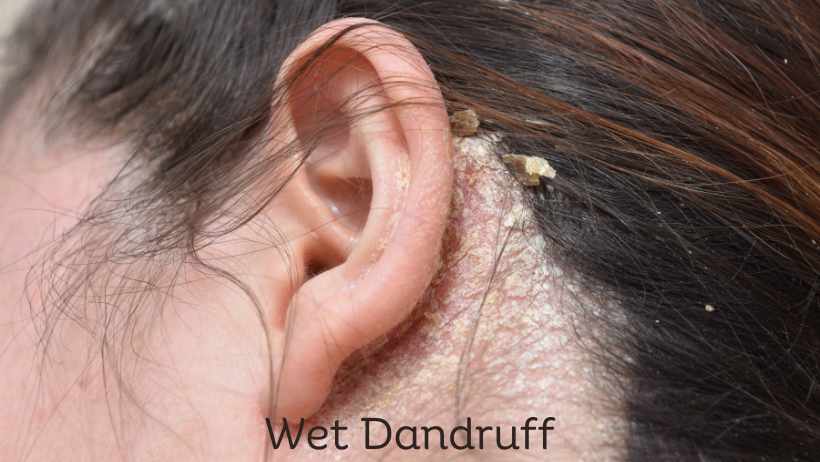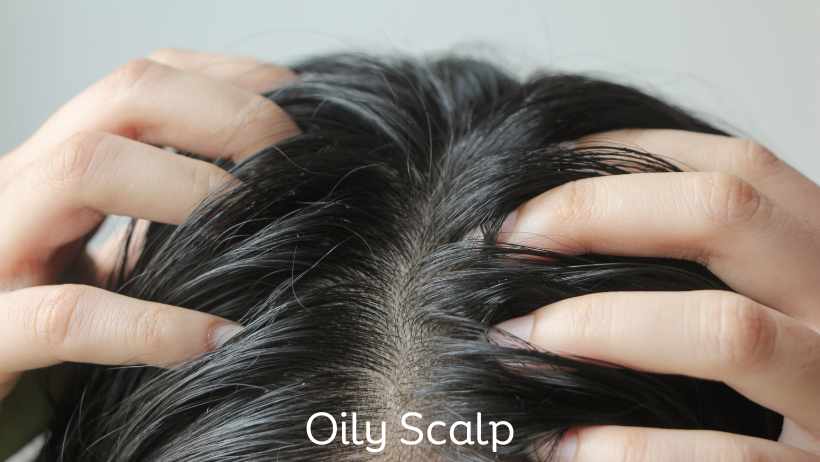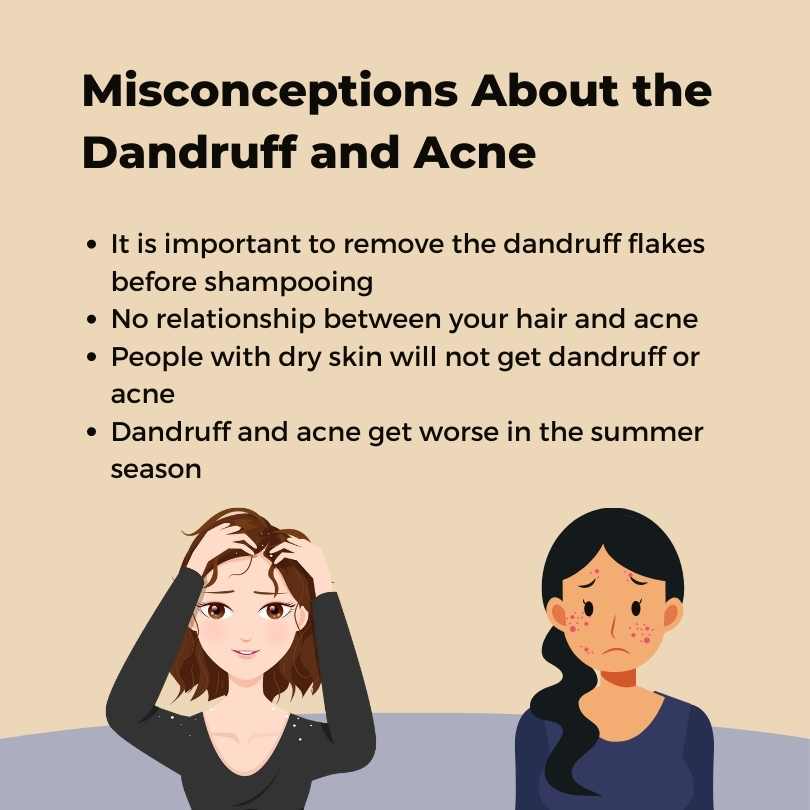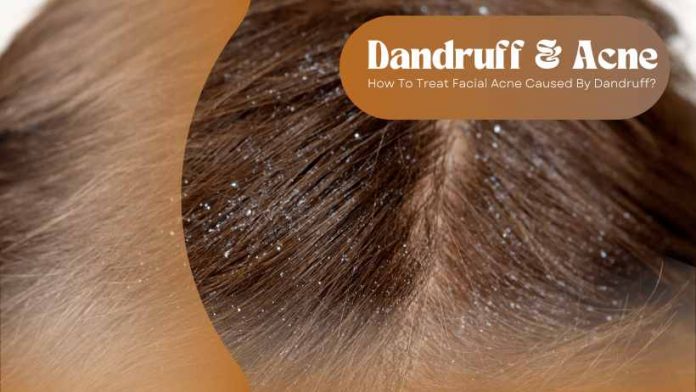Are you having a tough time wearing that favourite black dress while also feeling insecure about dandruff on your scalp? If such challenges aren’t enough already, acne outbreaks will be an uninvited guest when you plan to attend a party. Dealing with acne and dandruff can be a constant struggle. But did you know that these two skin issues can be interrelated? And that’s precisely why we have developed this write-up. Read on to learn how acne and dandruff are related and how to prevent acne induced by dandruff.
Does Dandruff Cause Acne?
Most often, people with oily scalps develop forehead acne or facial acne. The action of fungi or yeast causes dandruff. Acne is a skin condition that occurs when your skin pores get clogged with dead cells. So does your dandruff trigger acne? The answer is yes. Study shows that individuals who have scalp dandruff are more prone to develop pimples or acne [1]. Dandruff flakes will block the skin pores on your face, thereby leading to the development of acne.
How Dandruff Can Contribute to Acne Breakouts?
Seborrheic Dermatitis

Dandruff is not harmful or damaging to your skin if it is initially flaky. However, when it develops as a severe condition, it is called seborrheic dermatitis [2]. Also called wet dandruff, this scalp condition can be very itchy, especially along your hairline. It will also cause boils and rashes on the scalp [3]. It then leads to acne, which can spread to other parts of your face, neck, or shoulders. As your look is close to your hair, the acne-causing bacteria can spread quickly from the scalp. Seborrheic Dermatitis is also called seborrheic eczema, seborrhoea, or cradle cap.
Overactive Sebaceous Glands

During your teenage years, sebaceous glands might actively produce excess sebum and oil. The excess sebum produced gets into the skin pores. This, in turn, causes the formation of fungus, which leads to dandruff [4]. The skin on the scalp produces skin cells continuously, and the dead cells must be eliminated. However, an oily scalp causes the build-up of dead cells by blending them with excess sebum. It leads to the development of flakes, which falls off the scalp to reach your shoulders. These flakes, when comes in contact with your cheeks, forehead, and shoulders, lead to acne breakouts.
Best Ways to Manage Dandruff and Acne
Now that you have understood the connection between dandruff and acne, it is essential to learn how to prevent it.
1. Use Medicated Anti-Dandruff Shampoo
Choose only those anti-dandruff shampoos that have medicated formulations containing effective ingredients. Use products with ingredients like selenium sulfide, tar, zinc pyrithione, and salicylic acid. These shampoos are a perfect choice for treating acne associated with dandruff.
- Salicylic Acid: This shampoo ingredient is keratolytic [5], which performs by changing your skin’s protein structure. It eliminates the build-up of dandruff flakes while lowering inflammation and irritation on the skin.
- Zinc Pyrithione: This antifungal ingredient offers excellent relief from fungal infection. It is mild and removes dandruff without causing damage to the hair or scalp.
- Selenium Sulfide: This powerful ingredient in anti-dandruff shampoo is ideal for your colored hair. It also effectively treats yeast infections on the scalp, which trigger dandruff.
- Tar: Coal tar is a commonly used ingredient in anti-dandruff shampoos. It lowers scalp inflammation and skin irritation and slows down sebum production.
2. Hot Oil Massages
If you have a very dry scalp, then it can cause dandruff. It is essential to lower the scalp’s dryness level to prevent dandruff and acne. Hot oil massages are perfect for eliminating scalp dryness. Choose natural oils that work best for your skin to have a well-hydrated scalp.
- Coconut Oil: The study reveals that this natural oil is an excellent remedy to prevent dandruff by eliminating dryness by keeping the scalp hydrated [6]. It effectively lowers skin conditions like eczema, which might also cause acne. Choose virgin coconut oil to reap optimum benefits to keep acne and dandruff at bay.
- Tea Tree Oil: This oil is very effective in treating several skin issues, including acne and dandruff. Tea tree oil possesses anti-inflammatory and anti-microbial prowess, making it a perfect choice for hair and facial skin issues. Studies state this oil extracted from the tea tree effectively weakens acne’s fungal strains. You can also add a few drops of tea tree oil to half a teaspoon of coconut oil to enjoy a facial massage to stay acne-free.
3. Apply Aloe Vera
This succulent is widely popular for its effectiveness in skin and hair health, making it a compelling addition to all cosmetic products. The soothing effect of aloe vera makes it an apt choice for acne and dandruff [7]. It can also help treat itchy scalp and dandruff flakes, which induce acne formation. The anti-fungal and anti-bacterial properties of the aloe plant help combat dandruff [8].
4. Apple Cider Vinegar
The acidic effect of Apple Cider Vinegar [9] helps get rid of the dead cells build-up on your scalp. It restores the scalp skin’s pH to restrict fungal growth and alleviate dandruff. According to a test tube study, apple cider vinegar can slow down the fungal strains that might cause dandruff and acne induced by dandruff.
5. Juice of Lemon
The presence of citric acid in lemon helps combat the dandruff-triggering fungus. Massaging the scalp with lime juice will help remove excess sebum oil and dead cells to keep it clean. Instead of applying lemon juice directly on the skin, mix it with almond, coconut, tea tree, or rosemary oils to prevent irritation.
Busting the Myths: Common Misconceptions About the Dandruff and Acne Connection

The following are some of the misconceptions or myths related to dandruff and acne, which needs clarification to help you from aggravating it further.
1. It is important to remove the dandruff flakes before shampooing
Most of you would have this misconception of using a rattail comb for dislodging the dandruff flakes before using shampoo. The flakes on your scalp are not so heavy or adherent that they require you to dislodge them with a brush or comb. You may have a severe and different scalp issue, like scalp psoriasis. Harshly removing scales on the scalp can cause a lot of bleeding and pain, leading to infection. Seek professional help immediately to detect the type of scalp infection you have.
2. There is no relationship between your hair and acne
This statement is false. There is a proven relationship between dandruff and acne, as both are triggered by excess sebum or oil on your scalp and face. A scaly and itchy scalp can lead to forehead acne or acne on the cheeks.
3. People with dry skin will not get dandruff or acne
This is false. Individuals with dry skin will have minute breaks on their skin, letting bacteria enter the bloodstream. Dandruff on a dry scalp can trigger excess flaking, so you need to keep it well-hydrated.
4. Dandruff and acne get worse in the summer season
The truth is, there is no specific season for your dandruff to get worse. While some develop dandruff in winter due to dry scalp, some get it in summer when the scalp is sweaty and sticky. Not using medicated shampoos might also cause oil build-up, which can cause dandruff and acne.
Summing Up
Both acne and dandruff are stubborn skin conditions that can be cleared quickly when you seek professional help. When dandruff causes acne, the damaging effect is complex to handle. If preventive measures like regular use of dandruff shampoos and preventive actions fail to produce the desired results, seek expert advice to tackle them effectively.
Reference Study Links
- Zhijue Xu, Zongxiu Wang, Chao Yuan, Xiaoping Liu – https://www.nature.com/articles/srep24877
- The Mole Clinic, Private Practice, Ancaster, Ontario, Canada – https://pubmed.ncbi.nlm.nih.gov/37325288/
- Department of Dermatology and Cutaneous Surgery, University of Miami Miller School of Medicine, USA – https://www.ncbi.nlm.nih.gov/pmc/articles/PMC4852869/
- Susan L. Limbu, Talveen S. Purba, Matthew Harries – https://onlinelibrary.wiley.com/doi/full/10.1002/bies.202100005
- CavinKare Research Centre, No.12 Poonamallee Road, Ekkattuthangal, Chennai – https://www.ncbi.nlm.nih.gov/
- Department of Dermatology, Makati Medical Center, Makati City, Philippines – https://pubmed.ncbi.nlm.nih.gov/15724344/
- NCCIH Clearinghouse – https://www.nccih.nih.gov/health/aloe-vera
- Traditional and Complementary Medicine Research Center, Mazandaran University of Medical Sciences, Sari, Iran – https://www.ncbi.nlm.nih.gov/pmc/articles/PMC4452276/
- Postgraduate Program in Dentistry, João Pessoa, Paraíba, Brazil – https://pubmed.ncbi.nlm.nih.gov/25219289/









